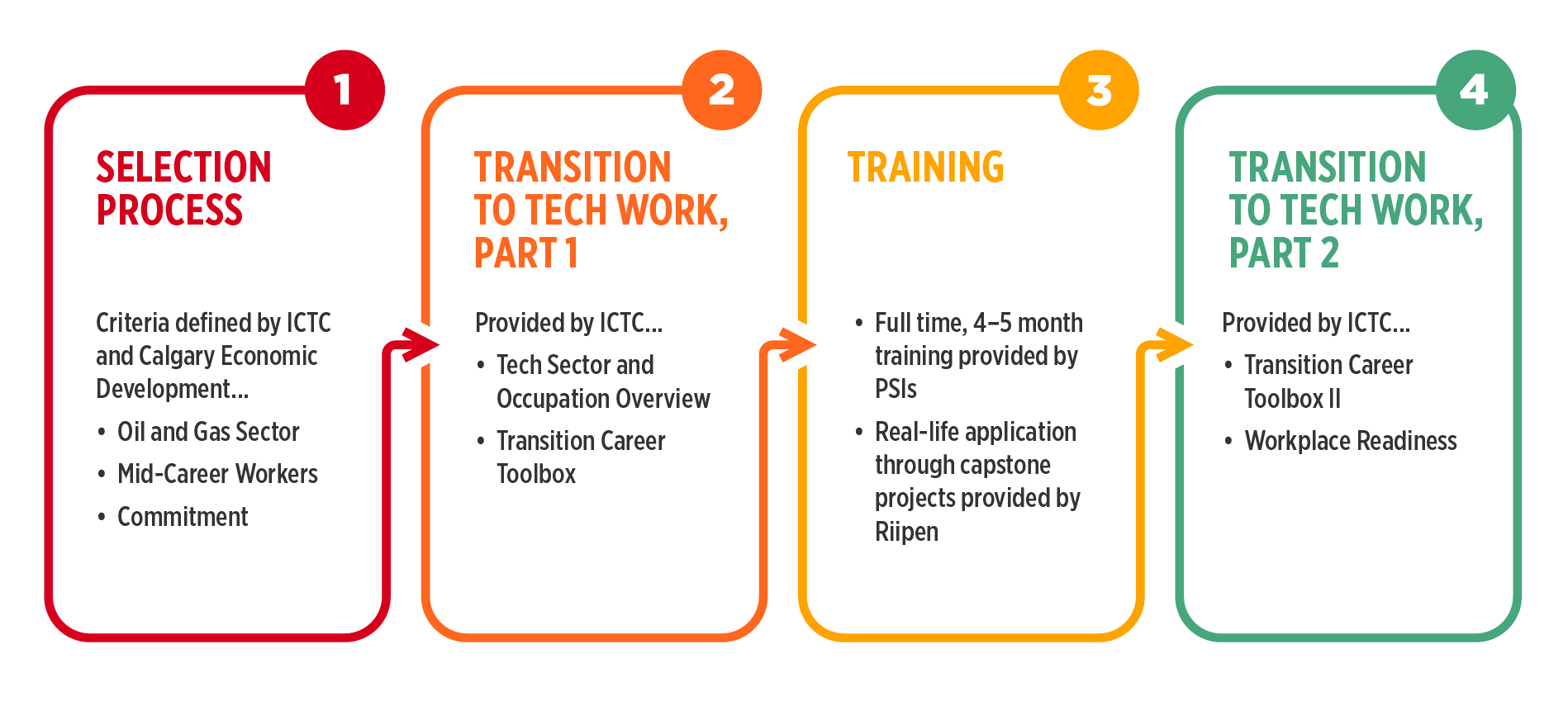Career development and university continuing education have changed over the decades. The days of completing a certificate or diploma, getting a job, working for 30 years and retiring is no longer a reality for many in this country. The “one and done” lifelong learning model is an old paradigm that went the way of the dodo bird.
In 2021, we are seeing the effects of the digital disruption afoot in all industries in Canada, which is having major regional impacts in fields such as auto manufacturing in Ontario and oil and gas in Alberta. As a result, the numbers and personal characteristics of those needing workforce development support have dramatically changed.
More and more career advisors and university continuing education units are serving displaced mid-skilled and high-skilled professionals with post-secondary education (baccalaureate and graduate degrees) and significant training and skills. Continuing education units across all types of post-secondary institutions, including universities, colleges and polytechnics, are responding to this trend by building upskilling and reskilling programs for the mid-skilled worker. Research universities, as the generators of new knowledge and ideas, are in a unique position to build upskilling programs for the highest-skilled individuals in our workforce. By doing so, university continuing education contributes to ensuring our Canadian workforce is globally competitive and equipped with the most current knowledge.
Six ways continuing education units contribute to workforce development in Canada
Workforce development is one of the primary functions of continuing education units. Here are a few ways continuing education can support the new wave of upskilling and reskilling needs of mid-skilled and high-skilled workers.
1. Continuing education units are uniquely positioned within our post-secondary community to develop short, flexible programs that are linked to in-demand skills in the workforce. Through advisory committees, ongoing partnerships and collaborations, they are embedded in their local business community. Through these connections and ongoing analysis of employer recruitment data, continuing education units identify the in-demand skills employers are looking for.
Example: Energy to Digital Growth Education and Upskilling Project (EDGE UP) is a short-term skills development program for mid-career oil and gas STEM professionals displaced from the oil and gas sector in Calgary. The project aims to help former petroleum engineers, geoscientists, geologists, chemists, etc. of the oil and gas sector gain employment in Calgary’s high-demand, high-growth digital technology opportunities across all industries.
The program is a consortium of partners: Calgary Economic Development, University of Calgary Continuing Education, SAIT, Bow Valley College, ICTC Canada and Riipen, with federal funding from Future Skills Centre. Each partner has a different role, as seen in Figure 1.

3. Continuing education units partner with organizations to tailor workforce development programs through corporate training engagements and other similar channels.
4. Continuing education units meet the needs of the working professional adult learner by scheduling and delivering programming in the evenings, on weekends and online. This allows working professionals to create a space in their lives to gain the credential they are looking for.
5. Instructors are a critical link between the university and continuing education students. Most instructors are working professionals and they all are experts in their field, which allows them to bring to the classroom the most up-to-date knowledge and practices. In annual surveys of continuing education graduates, students repeatedly express how helpful it is to their career to be able to learn practical responses to the real scenarios their instructors describe. They say they take these lessons and apply them in their daily work.
6. Career development professionals are in a unique position to bust the myth of the “one-and-done” career and promote a lifelong learning model. They help clients see their career and learning options, often incorporating discussions with their client on how to learn new skills. Continuing education programs are one place they can refer clients to for upskilling and reskilling options.
Connecting with your local university and continuing education school
Career development practitioners are the frontline of workforce development. As the need for upskilling and reskilling of mid-skilled and high-skilled professionals for a variety of careers continues to grow, how are you advising your clients? Are your clients connecting with your local continuing education unit for the right programs to help them shift their career?
If you’re in a position to collaborate or innovate with governments, post-secondary institutions and other related organizations, what have been your successes? What would you advise your colleagues contemplating such collaborations?
Share your stories in the comments section below! We would also love to hear from you directly. Visit the University of Calgary Continuing Education’s virtual exhibitor booth at CERIC’s upcoming Cannexus21 National Career Development Conference, starting Jan. 25. Learn more and register at cannexus.ceric.ca.




